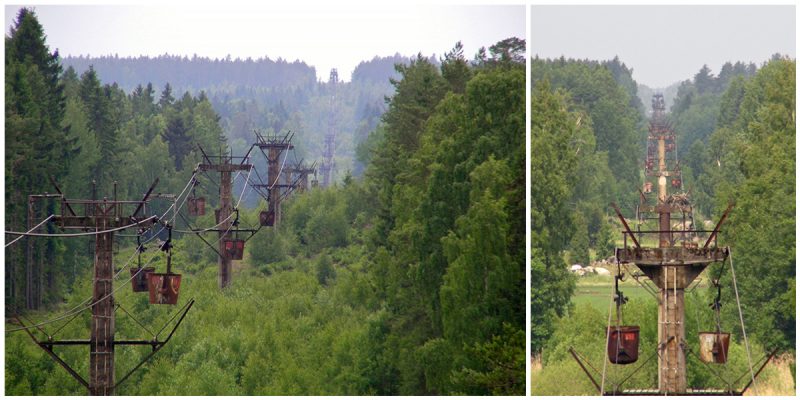The Forsby-Köping limestone cableway, commonly referred to in Swedish as Kalklinbanan, is an aerial tramway running from Forsby in Vingåker municipality to industrial town Köping in central Sweden.
This is where cement was manufactured until 1978, and later various limestone derivatives.
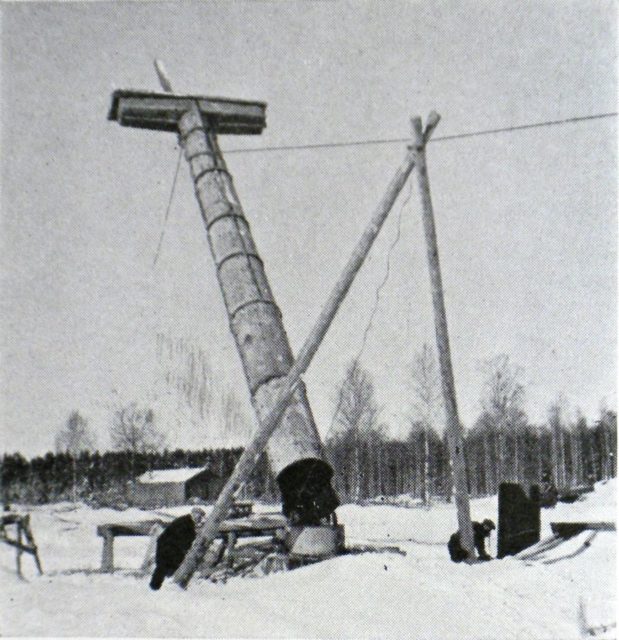
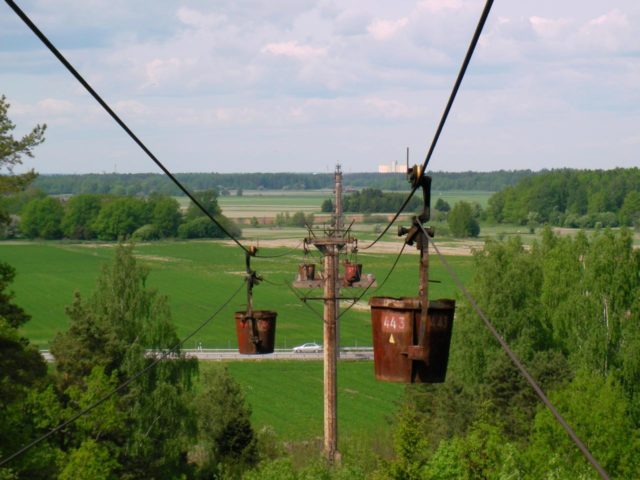
The cableway was built in 1939 by AB Nordströms Linbanor to transport crushed limestone extracted from the quarry at Forsby to the cement factory in Köping. Buckets of limestone traveled for 42 kilometers above the green fields, through the woods and over the lake Hjälmaren.
At the time of its construction, the transport system was the longest cableway in the world, but it was soon superseded by a few other, similar industrial transports.
It eventually became the world’s longest working cableway when the other cableways were demolished or cut short during the 1960s–1980s.
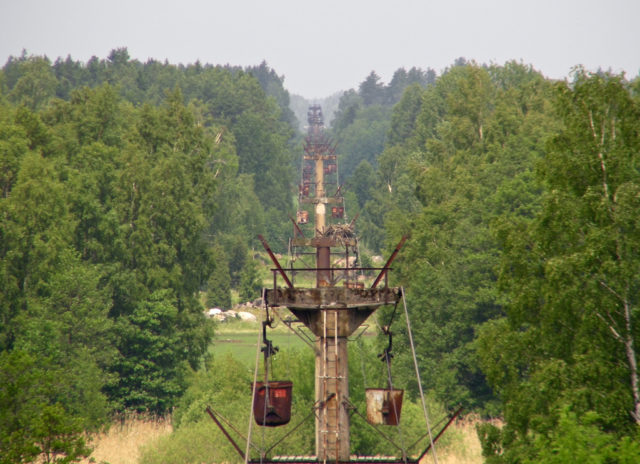
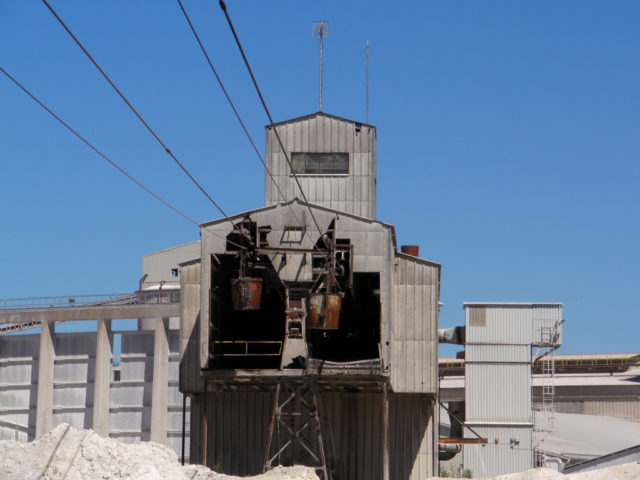
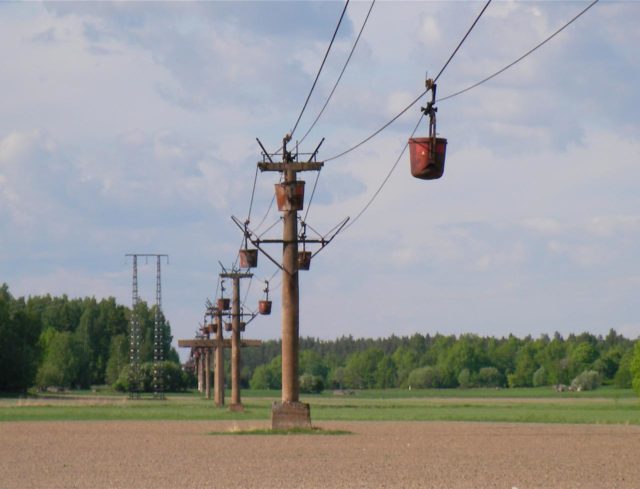
Limestone from the Forsby quarry was coarsely crushed and sorted by hand. Passing cableway cars were automatically loaded from a storage silo, after the passage to Köping cars were automatically unloaded, the limestone was fine-ground and ready for cement production.
The cableway is supported by 235 concrete trestles and split into 4 sections with stations in Forsby och Köping as well as the angle stations at Granhammar, Malmberga and Knotberget. Of these trestles, 10 are tall “special trestles” at the crossing of the Hjälmaren strait and Arboga River, the tallest being 45 m.
Power stations are located in Köping, Malmberga and Forsby. 12 tension stations line the track, and 8 road or railway intersections are protected by steel nets.
The limestone was transported in 750 bucket-shaped cars, each carrying 1200 kg for a total capacity of 90 metric tons per hour.
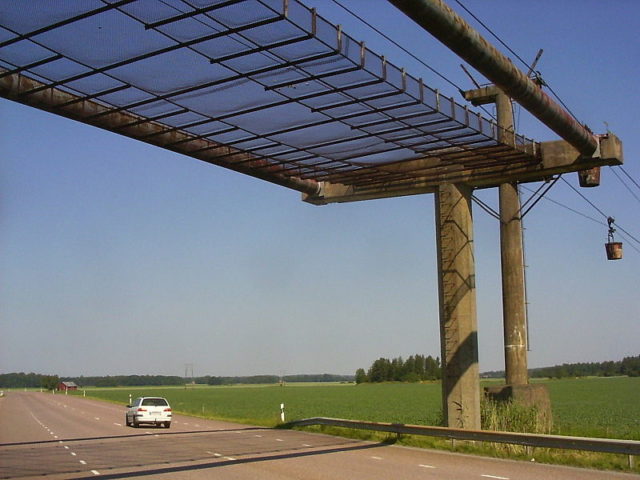
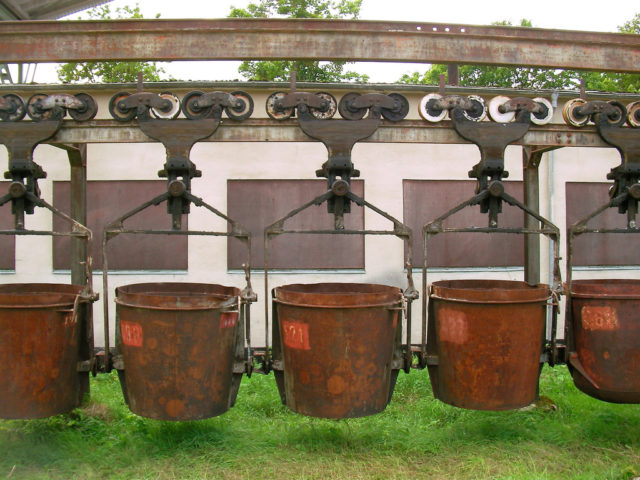
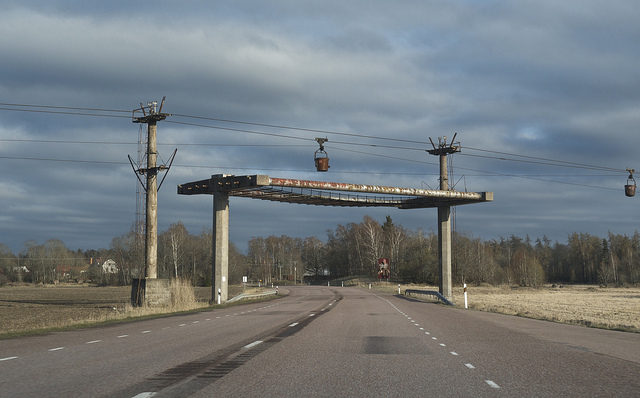
After 56 years and a total of 25 million tons of transported limestone, the record-setting cableway finally ceased working in 1997. Since then the cableway has remained mostly stationary and a number of attempts have been made to preserve it as a piece of industrial heritage.
However, the owner, Nordkalk, was unable to find a suitable caretaker so starting 2013, step by step, many parts of the cableway have been taken down and sold as scrap.
The cable has long since been removed, as well as most of the limestone containers and many of the 235 trestles. However, the remnants of a record-setting industrial bucket system can still be found dotting the Swedish countryside.
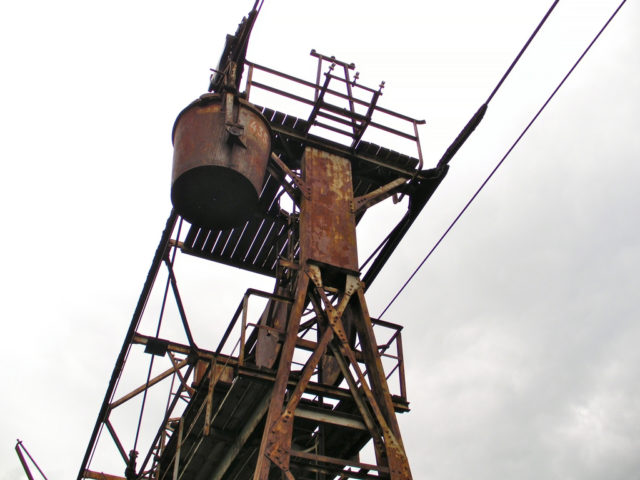
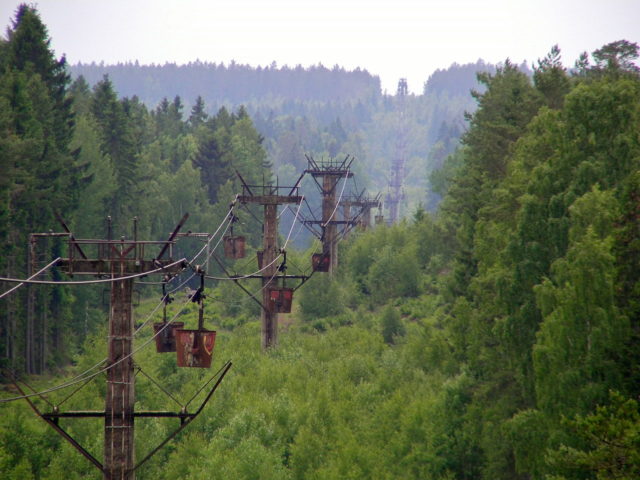
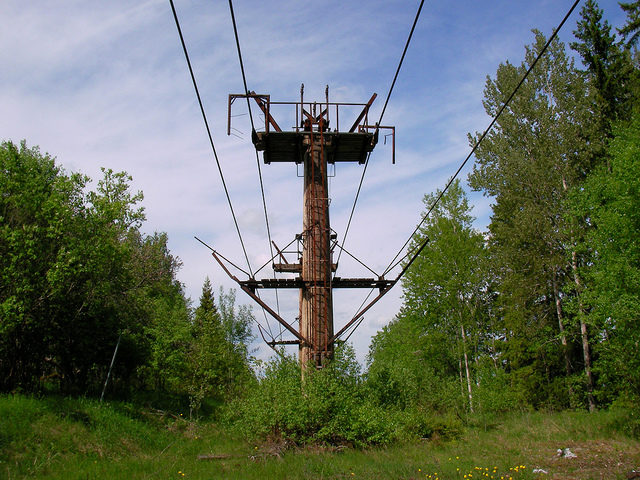
The International Committee for the Conservation of the Industrial Heritage – TICCIH – was alerted of the urgent situation and wrote an open letter in February 2013 addressed to key organizations including the Swedish National Heritage Board.
This letter reinforces the singular importance of the Forsby-Köping cableway as transportation heritage, urging the authorities involved to avert demolition and assure its preservation.
